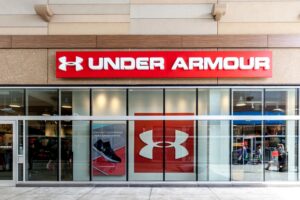September 19, 2006
Saks Says Its Efforts Were Wasted on the Young
By Rick Moss
As “Step One in a multistep process” to turn around the luxury department store chain, Saks is re-tailoring its offerings to appeal to the older, more affluent clientele that
has historically been their market base, reports the Associated Press.
The last eight years have been marked by a diversity of troubles and poor decisions for Saks Inc. – a merger with mid-market Proffitts Inc. (eventually divested to Bon-Ton Stores);
a veering off-course into youth-oriented fashions; and last year’s SEC accounting scandal concerning improper vendor collections.
To get things back on track, the chain’s newly streamlined management team has crafted a multi-tiered makeover, according to vice chairman and chief merchant Ron Frasch. It begins
with a rebuilding of Saks’ branded fashion approach with classic labels such as Ellen Tracy – essentially a return to an unabashed luxury image in efforts to climb aboard the
wave of success enjoyed in recent years by Nordstrom and Neiman Marcus.
Remodeling its regional stores, somewhat ignored of late in deference to its Fifth Avenue flagship, is also a big part of the plan. With the recently renovated Saks Atlanta store
serving as the prototype, the company will spruce up its Boston and Beverly Hills locations with open cosmetic counters and more enticing fashion displays.
Executives have been very clear about their mistaken strategy of pursuing younger customers and, in so doing, alienating their core group said to average 48 years in age. Consequently,
this fall will see Saks Fifth Avenue Private Collections, featuring trendy labels and, overall, a broader selection of merchandise on the floor to win back the well-heeled crowd.
Discussion Questions: Do you approve of Saks’ new turnaround strategy? Do you expect the growth in the luxury market to continue and for Saks to profit
from the trend?
Discussion Questions
Poll
BrainTrust
Recent Discussions







I think the better question is, why wouldn’t you market towards the largest and most affluent generation in history, especially if they are predisposed to like you?
Consumer closets tend to change very gradually during a woman’s working years and when they’re raising their families. Closet turnover occurs after the major life events: graduation from college, marriage, retirement. In between, it is only fashion that drives sales, not real needs stimulated by life changes.
The biggest consumer group is the baby boomers, now often empty nesters. More and more are in early retirement. That’s when retailers like Saks are facing larger opportunities to meet the needs of changing consumers. Also they are at risk of losing loyal customers who are looking for solutions to a new life style.
Saks wants to be relevant to your loyal baby boomers customers. Help them turn over their closets so they can look sharp in their retirement years. Their granddaughters will notice and shop at Saks as they develop their careers.
There is no doubt that the economic condition of the US population continues to polarize. Retailers have an obvious decision to make regarding which segment they want to address. The question is “Does the consumer understand what I am offering?” To make the message clear and ensure the consumer is not confused, the offer must be concise and focused. There is no “middle of the road.” Although demographic and regional factors still influence, the overwhelming impact comes from the economic condition of the consumer. This will only become more obvious as deflating real estate prices and high interest rates on credit make more consumers forced to accept delayed gratification.
For Saks, this means that they must make it clear whom they are targeting. Maybe this return to the traditional shopper will work, but it does not have to alienate consumers based on age or other demographic. It must become clear that they are serving the well-heeled of all demographics, offering service and products that are trendy for everyone. It sounds like they have realized that and by returning to their roots will improve the consumer message so that it also clear to the customer.
This is the best move they can make. It’s too bad they’ve spent the last 8 years trying to be things they aren’t. This is a clear lesson to anyone else looking to takeover a retailer based on the premise they can expand their position in the marketplace. Each retailer has its core consumer and the best strategy any retailer can take is to find ways to deepen that relationship, not try to reach out to other consumer groups.
One of the issues with SAKS is its mindset for consumer service, not being at the same level as either of the upscale and very dominant consumer centric, Nordstrom and N-M.
Secondly, has it done its homework to make sure there are enough older shoppers’ segments that Saks can capture?
Two major stumbling blocks for Saks. Hmmmmmmmmmm
I think this makes sense, especially in light of where the competition, and all of retail really, is going. The recent spate of apparel spin-offs have one thing in common — they are evidence of retailers’ realization that one store simply cannot fit “all” in a niche-bound world. That isn’t to say that some aren’t still trying. Barring entering into the spin-off fray, behemoths such as JCPenney and Wal-Mart (and Best Buy, and…) are left little choice than to get better and better at segmenting their customers into lifestyle groups and creating or acquiring brands accordingly. Saks’ direct competition, Neiman, recently broke ranks and joined the spin-off party by creating their trendy and lower cost “Cusp” concept. Venerable Dallas specialty retailer, Stanley Korshak recently did the same. Cusp allows Neiman’s to hold onto the blue-blooded (and now blue haired!) customers that made the original format such a destination while offering high-end candy to the next generation of spenders. Once Saks gets back on its feet, surely they too will find a way to participate in the young and trendy opportunity. For now, focus, focus, focus.
Oh, here’s a novel idea…know who your customer is and concentrate on making them happy. Who knows? Might work!
Whether it’s luxury dog products or luxury fashion — knowing your customer and tailoring your interior to appeal to the target demographic is key in today’s market.
The BABY BOOMERS are, for the most part, very affluent. Interestingly enough, some of them are still keeping up their X-GENER’S as much as they are going out and creating new technologies and companies. This X GENERATION is having kids – but it’s really the Y GENERATION that is out there buying up luxury this and that on their parents credit card (shared account) or their hefty allowance. The Y GENERATION wouldn’t be caught dead in a Saks Fifth Ave because that is where their parents and grandparents shop!
They are more likely to be shopping at Juicy Couture or any stylish boutique on Robertson in Los Angeles.
Both the X and Y are not easy to advertise to. We know all the dirty tricks from snazzy product placement (which we kind of get into if it’s not a bunch of crap) to flash advertisements that pop out of no where on our favorite website (lame, lame, lame). Saks has the image of “class” — old-world-glamour fit for my parents and grandparents — but would only survive in certain markets such as NYC, Chicago, Dallas, Kansas City (Plaza), Denver, etc.
… Kind of a long opinion with a lot more information. I talk about this all the time with my clients: market to your target market. Don’t waste time pretending to be something (your store) is not.
Saks is not the only company missing the boat. I don’t understand why so many stores are trying to appeal to the younger generation when the population is clearly becoming a boomer market. Boomers have the money and will spend it on what they like. It’s simple. Find out what they like and sell it.
Saks should be careful not to fluff off younger consumers. The thought that you only cater to an “older crowd” is insane. The real move should be to classic luxury – which a lot of younger shoppers appreciate too. Alienating certain ages is dumb, alienating certain income levels is not. Saks should be spending part of their reimaging on educating consumers on what luxury really is.
Look at hotels… Starwood, Hilton and Marriott all have levels of brands that cater to different demographics. The goal is to catch the guest at a young age and introduce them to new options as their lives change but keeping them in the family. Sounds like a perfect retail strategy to me. Today, as consumers, we’re bounced from Target to Macy’s to Nordstrom to Saks or NM in a similar progression. No one company has found a life-loyal customer.
As a long term strategy, I concur with Saks’ new venture. There will always be a large group of middle-aged consumers starting with the Baby Boomers and, due to modern medicine, Generations X, Y, Z and so on will live longer, so it’s a sound strategy. Let’s hope their hiring practices reflect their plan as well!
Congratulations to Saks for realizing their previous mistakes and returning to their roots. In leveraging its past and the strength of their brand, Saks should be able to reclaim its share as the market for luxury good continues to strengthen.
While the strategy probably makes sense — young oil and old water apparently don’t mix (Prada flip-flops, anyone?) Saks needs to stake out its own identity. If it worries about “catching” NM or Nordstrom (or whoever) it will be following another blind path; it’s in somewhat of the same position as Lord & Taylor, only w/more of a national store base, and a stronger flagship.
Let’s hope that this latest thing out of Saks’ sack doesn’t sack ’em. Their strategy sounds good but they will have to hit the intended target.
It would be best for Saks’ public relations to refrain from proclaiming a repositioning towards older shoppers. Just reposition without stating the reason. Let the audience decide from the evidence. Saks needs to be dominant with someone, since Saks stores aren’t very large compared to some other department stores. And consistency buys a lot of loyalty. If this repositioning for Saks is reversed by a new management team in 3 years, Saks will just be damaged again. Customers resent chameleon brands.
Saks is brilliant! Tell the yuppies to go away – their store is only for the blue bloods. Can you possibly imagine anything as appealing to the Whole Foods crowd as being told they aren’t wanted? I predict that Saks will have to restrict access after all the “interest groups” hear that they aren’t welcome anymore!
It is terrific that Saks has decided to restore itself to where it should be — it has most definitely suffered recently from slightly poor assortment and lack of focus. KNOW who you are and serve your base. The Saks customer is still there saying “what is up with Saks?” That customer is still buying at Nordstrom and Neiman’s. Their customer will return because they are still there – but with nothing to buy in Saks (outside of the 5th Ave location). I have had people tell me they go to NYC and eschew their OWN location because the assortment and mechandise isn’t “right.” Some of the recent moves were very disheartening to an observer– How do you leave Oakbrook and Northbrook in Chicago, and was Kansas City really that bad? What was their KC competition? Some of their recent openings seem to be simply spending their cache in the hopes that people without a local outlet will go no matter what was offered. Hopefully the change in direction will sort out all of these poor moves and allow them to return to the serious competitors that they can be.